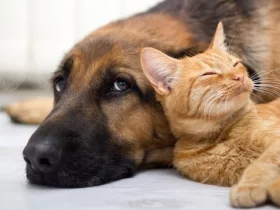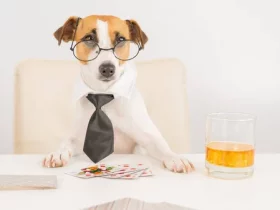You can learn how to crate train a puppy with the tips outlined in the article below. Crate training is necessary in order for your dog to start to learn obedience, become house trained and feel secure in his own place.
One important part of crate training a puppy is getting the right size dog crate. The crate should be big enough for the dog to stand and turn around in, but not so big that he gets lost in it. If your puppy is a larger breed, you can buy a bigger crate that will fit him when he is an adult, but you must also buy a piece that sections it off so that is is smaller for when he is a puppy. You want the crate to emulate a secure den for you new puppy and it just won”t feel the same if it is too big!
14 Tips for Crate Training Your New Puppy
Author: Peggie Arvidson-Dailey
Your new puppy is arriving and you have heard of crate-training, but are not sure how to make it work for you and your newest addition. From years of experience as a pet-owner, lover and specialist, I have learned some things about crate training that I”d like to share with you.
Crate training is wonderful part of an overall family training program if handled correctly. Your puppy will feel secure in his space if you make it a pleasurable experience from the very beginning by following these 14 tips.
- Get a crate large enough to allow your pup space to turn around, stand up and lie down for a nap.
- Put a soft blanket in the crate, preferably with his mother”s scent on it when you bring him home.
- Make sure to put his toys for chewing and a treat or two in the space furthest from the ‘door.”
- Put the crate in a corner of room where he can feel out of the way, yet have access to you.
- Let your pup wander in and out of the crate to get a feel for it, the crate makes a nice ‘den” for your puppy and he will likely take to it for comfort and solace when he is tired, over-excited or worried.
- Remove your pet”s collar/s before closing the crate to avoid any choking;
- Have a bottle of water with ice hooked to the crate if you will leave your puppy for more than an hour;
- When it”s time to be crated, tell your puppy “Crate” or “Bed” and show him to the crate. You may put a treat in there if you have been training him with treats.
- Don”t ever: scare him into the crate, put him in there as a punishment or otherwise encourage a negative connotation to the crate.
- 10.Practice this several times a day during his first few weeks home. Leaving him in the crate for short intervals while you leave the house. He will soon realize that you come back and let him out.
- If your dog needs something to chew, make sure you give him a toy that he cannot shred, break or otherwise harm himself with. If he is an aggressive chewer, I recommend the Galileo Bone by Nylabone.
- When you let your puppy out of the crate, immediately take him outside to relieve himself. For very young puppies, this will likely be every 4 hours. (on average a puppy needs a break in as many hours as he is months old – if your puppy is 4 months, please give him a potty break every four hours)
- When you are leaving, or putting him in the crate, give him his command, “Crate,” praise him gently when he complies (but do not get effusive – you don”t want him to get all riled up!) and then leave without a commotion.
- Upon returning, open the crate and let your puppy come out at his own pace. Don”t make a big fuss, simply praise him gently, put on his collar and leash and take him outside.
Crate training is a valuable asset to any training program for new puppies and can help enhance your relationship with your canine pal. A happy and comfortable puppy will mature into a well-mannered and loving companion.
About the author:
Pet-Care Expert, Peggie Arvidson-Dailey, is the author of “How to Maintain Your Love Affair With Your Pet” and the founder of Peggie’s Pet Services. To learn more about maintaining YOUR love affair with your pet sign up for FREE how-to articles and FREE teleclasses.











